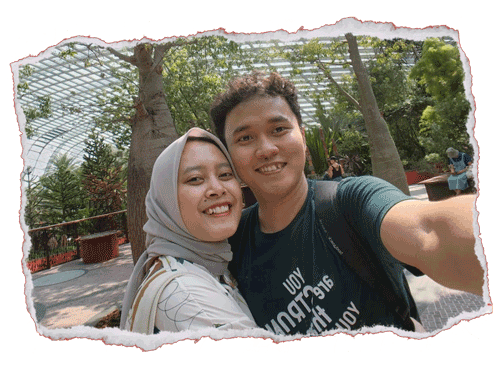As a history enthusiast, I am always eager to explore museums. During a recent vacation in Singapore with my wife, we seized the opportunity to visit one of the country's most renowned institutions—the National Museum of Singapore.
Established in 1894, it holds the distinction of being Singapore's oldest museum. Let me share our fascinating experience and provide some additional information about this remarkable institution.

The National Museum of Singapore is situated at 93 Stamford Road. To get there, you can take the MRT and stop at one of the four stations close to the museum: Bencoolen Station (DT21), Bras Basah Station (CC02), Dhoby Ghaut Station (CC01/NE06/NS24), or City Hall Station (EW13/NS25).
Alternatively, you can take the bus and stop at the YMCA or SMU bus stops. In our case, we chose to walk from Bugis after having breakfast at Albert Food Court.
Ticket prices for the National Museum of Singapore vary depending on the areas you wish to access. The most affordable ticket costs SGD 15 and grants entry to the permanent gallery.
We purchased the permanent gallery tickets for only IDR 100,000 through Traveloka. The museum is open daily from 10 am to 7 pm, and we arrived at around 10:30 am. The museum's exterior is an impressive and majestic all-white building, designed using Renaissance and Palladian architectural styles.

Upon entering, we headed straight to the ticket counter near the entrance, where we encountered several visitors already in line. A screen displayed ticket prices and information on events taking place at the museum.
When it was our turn, we presented the e-ticket we received after purchasing our tickets on Traveloka. The museum officer scanned the QR code on the e-ticket and provided us with a printout.
We were also given stickers to attach to our clothing, which allowed museum staff to easily identify the type of ticket we had purchased, the permanent gallery one.
With our tickets and stickers in hand, we proceeded to explore the various exhibition rooms. So, here are some exhibitions that we visited:
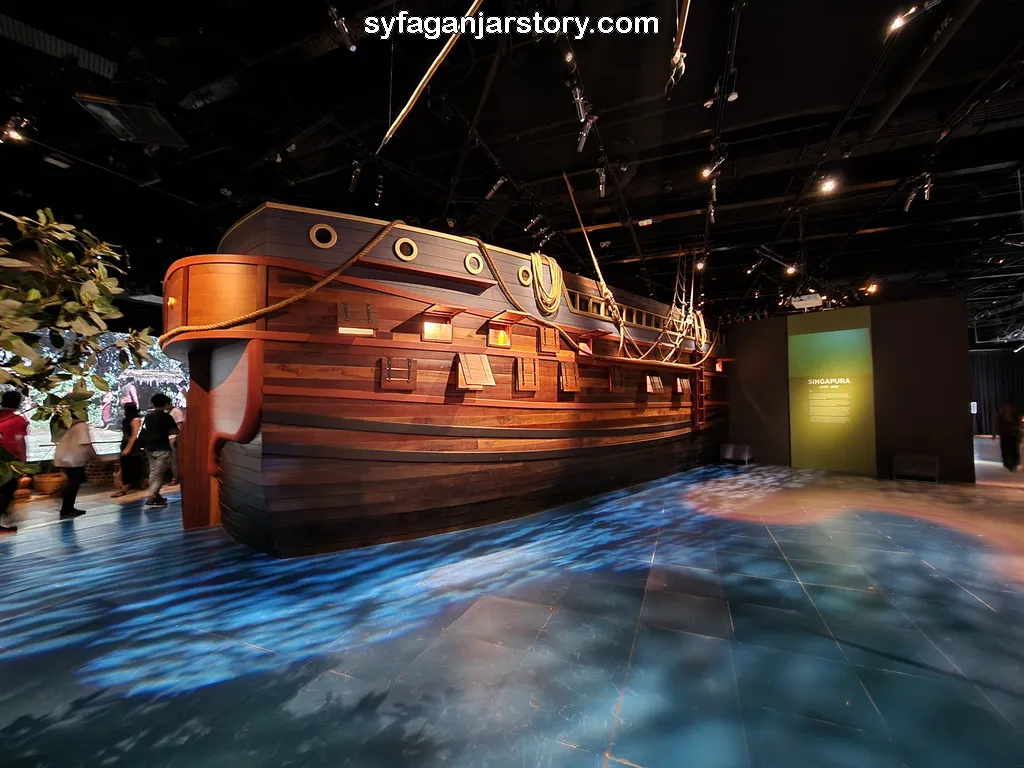
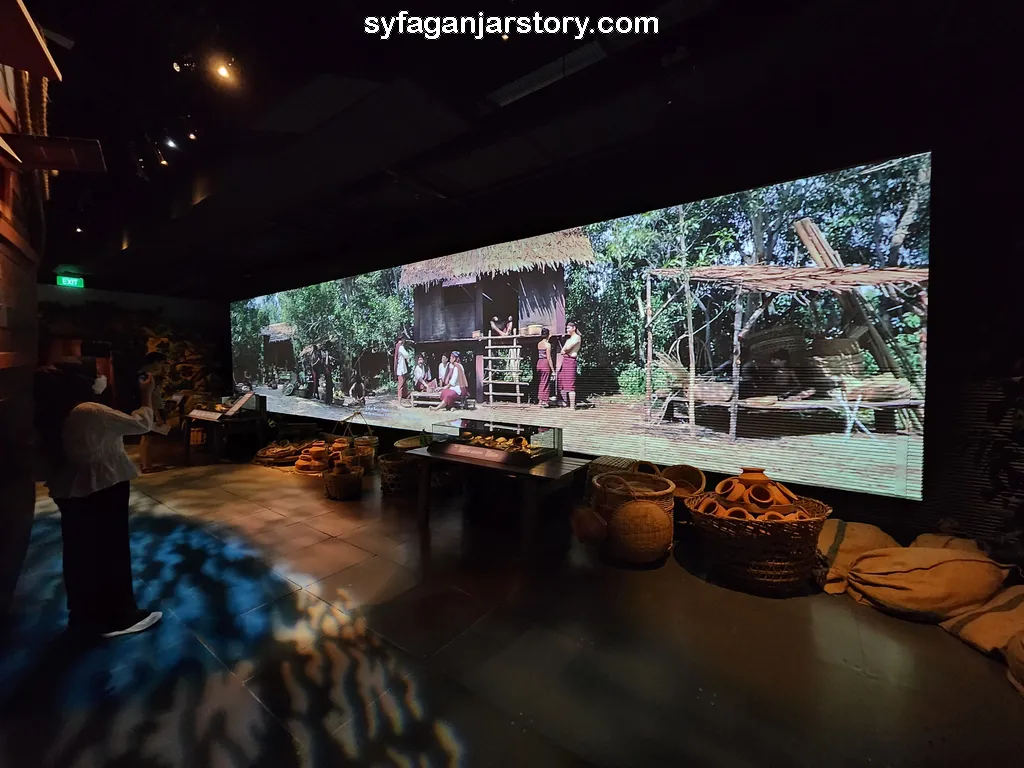
The first exhibition, the Singapore History Gallery, is located on the first floor at the very back and is the largest exhibition space in the museum. As the name suggests, this gallery presents the history of Singapore in chronological order.
Upon entering, we were greeted by a miniature boat, symbolizing the maritime livelihoods of ancient Singaporeans. This area also showcased various ancient artifacts, such as plates from the Yuan dynasty.
In addition, the museum features a large screen that displays videos depicting the lives of Singaporeans in bygone times. Since Singaporeans and Indonesians both share Malay origins, I found their lifestyles and cultural practices were quite similar during those historical periods.
Besides the large screens, certain sections of the museum also offer small monitors for visitors to enjoy while seated in chairs provided in front of them. These monitors are equipped with headphones, which can be used to listen to the accompanying audio, ensuring an immersive and personal viewing experience.
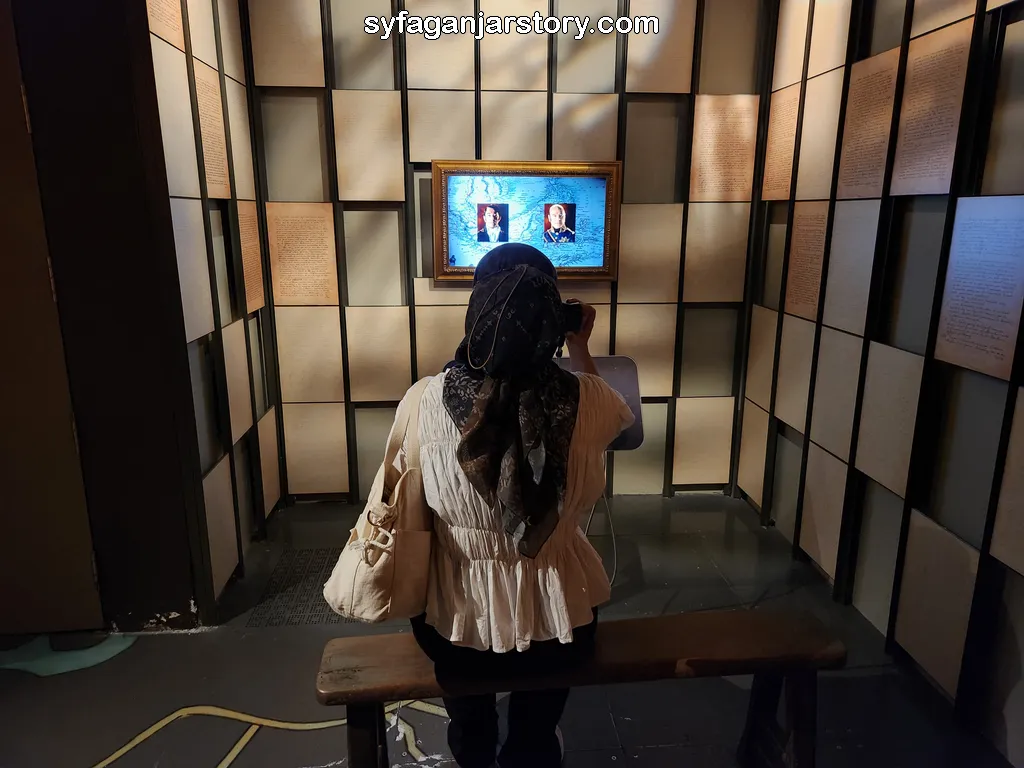
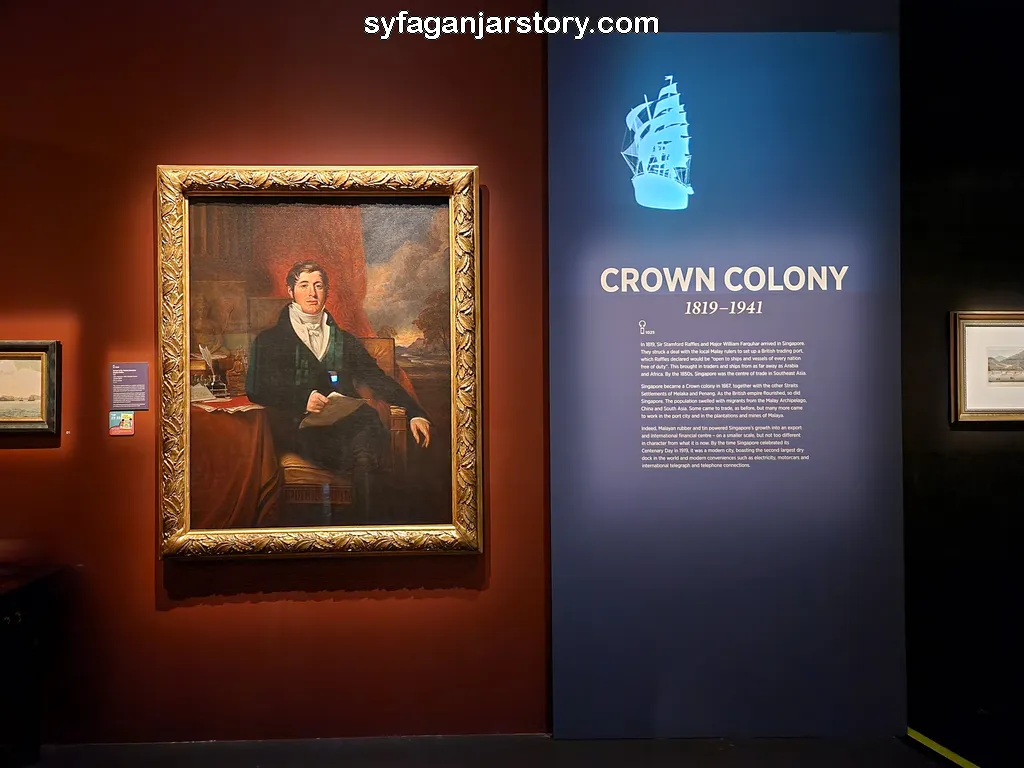
Next, we entered the British colonial period exhibit, or the Crown Colony, which began when Sir Stamford Raffles arrived in Singapore in 1819. Raffles established a British trading port to challenge the Dutch monopoly in Indonesia. As a result, Singapore became the wealthiest and most developed region of its time, attracting traders from various ethnicities and countries.
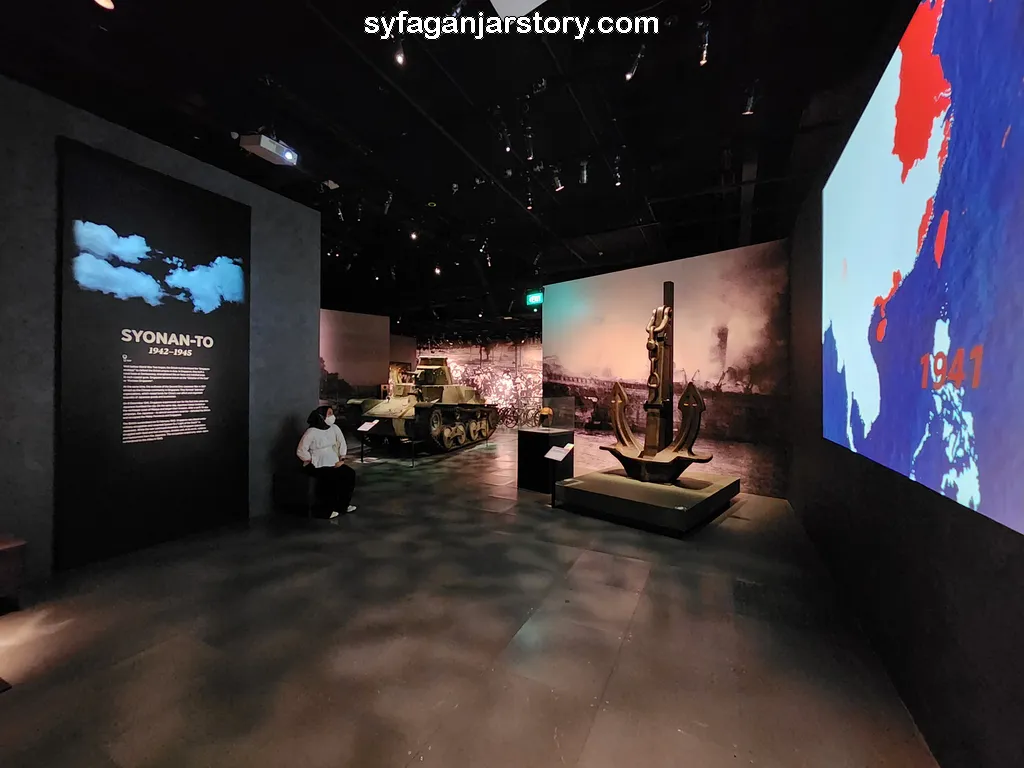
Following the colonial period, the museum delves into a darker era, when the Japanese army colonized Singapore in 1941. The Japanese renamed the island Syonan-To, meaning "Light of the South." This section of the museum evokes a tense atmosphere, with sounds of cannons, bombs, and fighter planes, as well as sirens, simulating the experience of war.
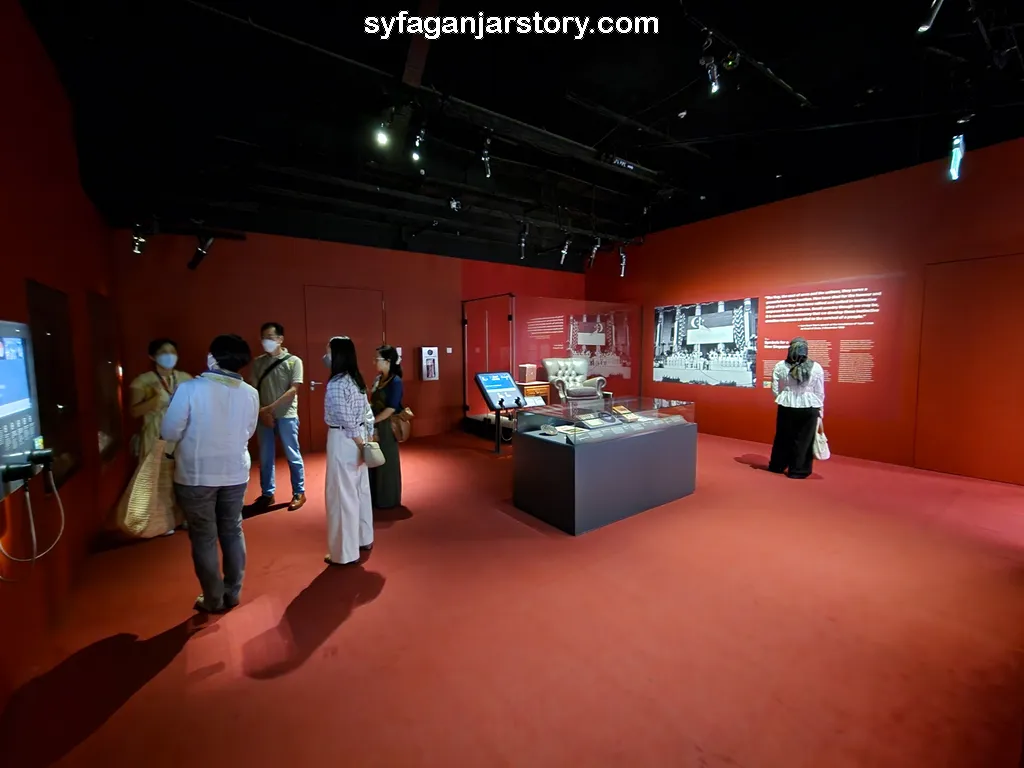
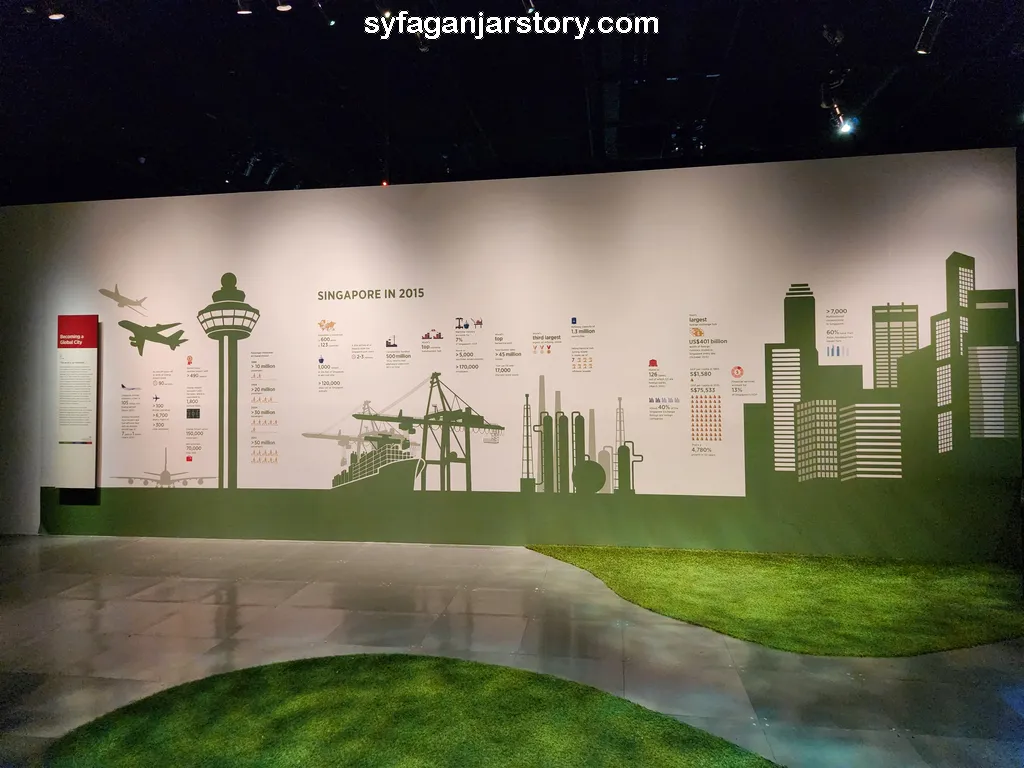
Upon leaving the somber section, we arrived at a more uplifting exhibit, which focused on the era of Singapore's independence. Following World War II, Singapore briefly reverted to being a British colony before joining the Federation of Malaya (later known as Malaysia).
It wasn't until 1965 that Singapore achieved its official status as an independent nation. This exhibit shares a collection of inspiring stories and significant moments from the country's journey to independence.
As we continued our journey through the museum, we entered the final area of the exhibition, which showcases various accomplishments of Singapore following its independence. The information displayed in this section covers events up to 2015, suggesting that it may not have been updated recently.
Each item in the exhibition is accompanied by a text description in English. Interestingly, each description also features a unique code comprised of a series of numbers.
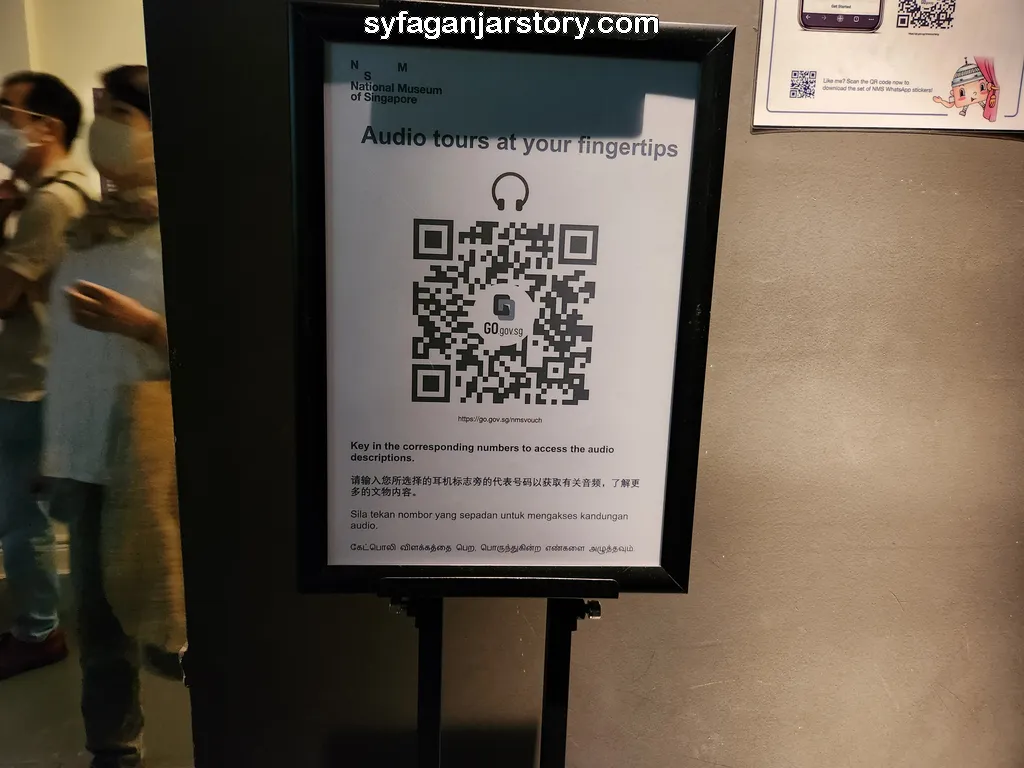
For those who prefer listening to reading, the museum offers QR codes to scan with a smartphone. By entering the unique code, visitors can listen to the text being read aloud on their devices—an engaging and convenient feature.
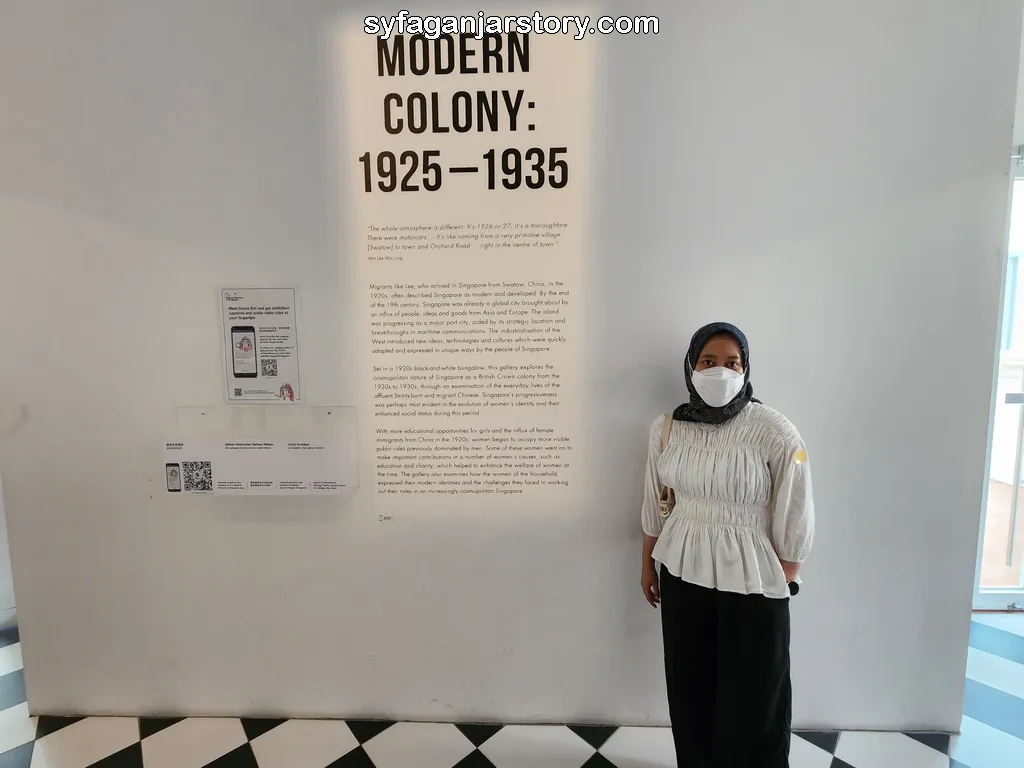
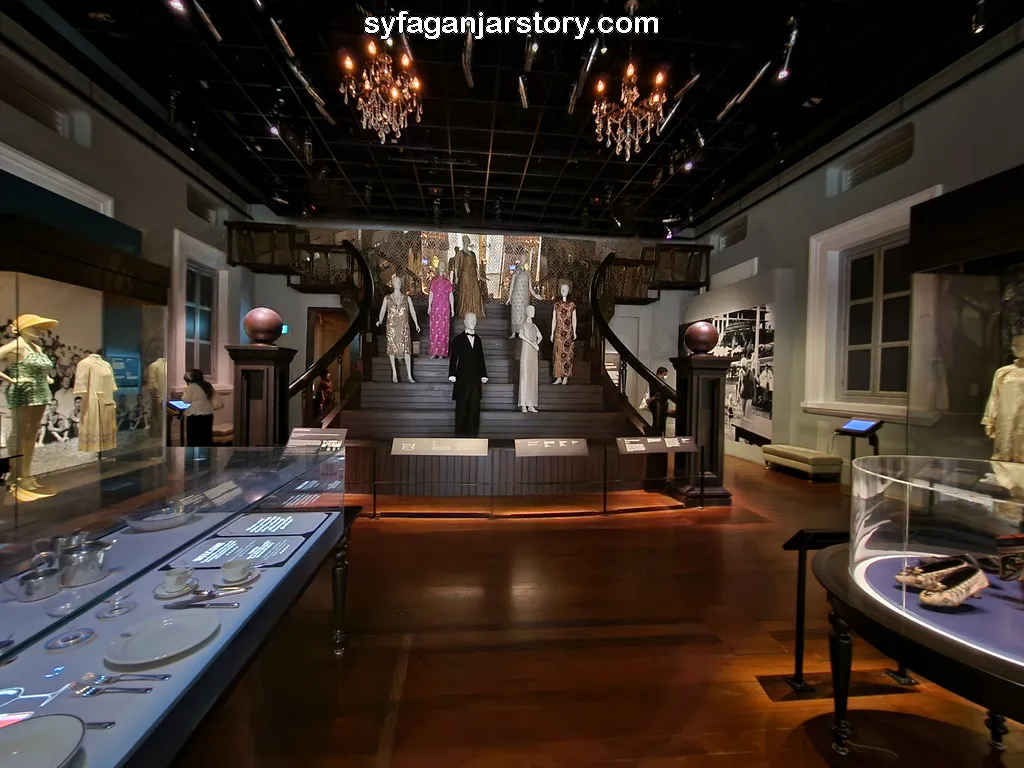
After completing our tour of the Singapore History Gallery, we ventured up to the second floor to explore another set of exhibitions. This area also focuses on Singapore's history but is divided into four separate exhibition rooms.
The first room, titled "Modern Colony," highlights the period from 1925 to 1935. In this exhibition, visitors can view an array of clothing worn by Singaporeans during this era, with a particular emphasis on women's attire.
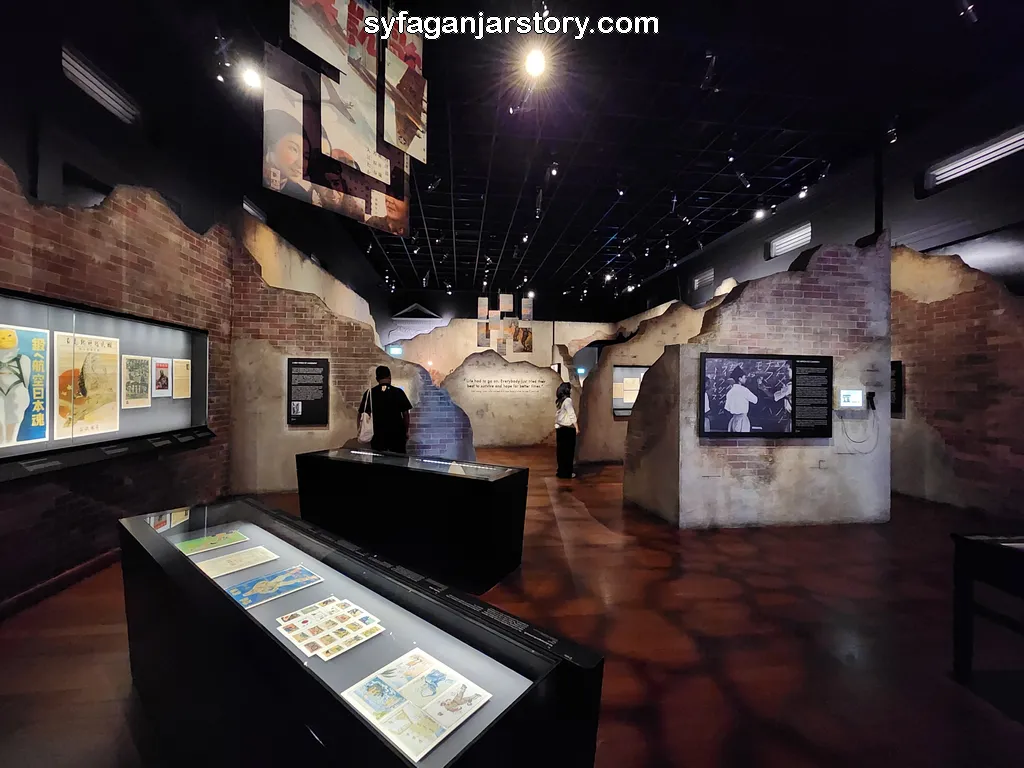
The next room, "Surviving Syonan," delves into the Japanese colonial period. Once again, the atmosphere becomes tense, as sirens, bomb sounds, and the depiction of collapsed buildings recreate the harrowing experiences of the time.
Numerous photos and videos display the atrocities committed by the Japanese army, while letters and diaries reveal the suffering endured by Singaporeans.
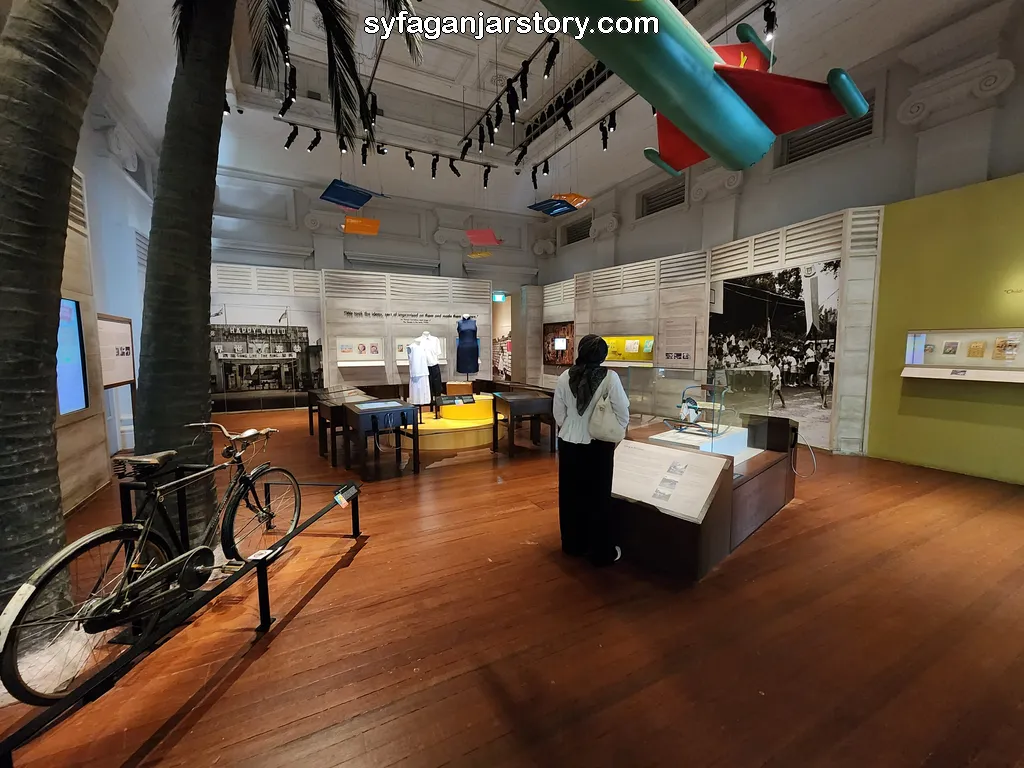
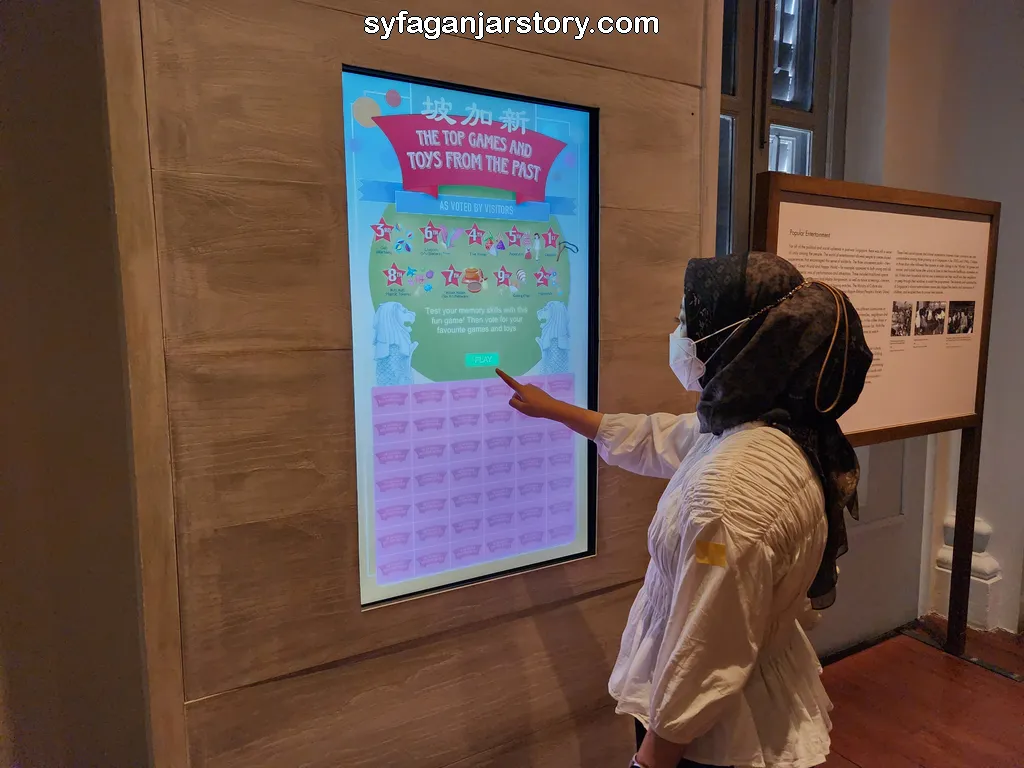
The subsequent exhibition room provides a brighter outlook, highlighting the happiness and resilience of children in the aftermath of World War II. In the face of political instability, children were still able to cherish their childhoods.
This engaging exhibit showcases an array of toys, photographs of children participating in various activities, and an interactive screen where visitors can enjoy a game that involves matching images of children's toys from that period.
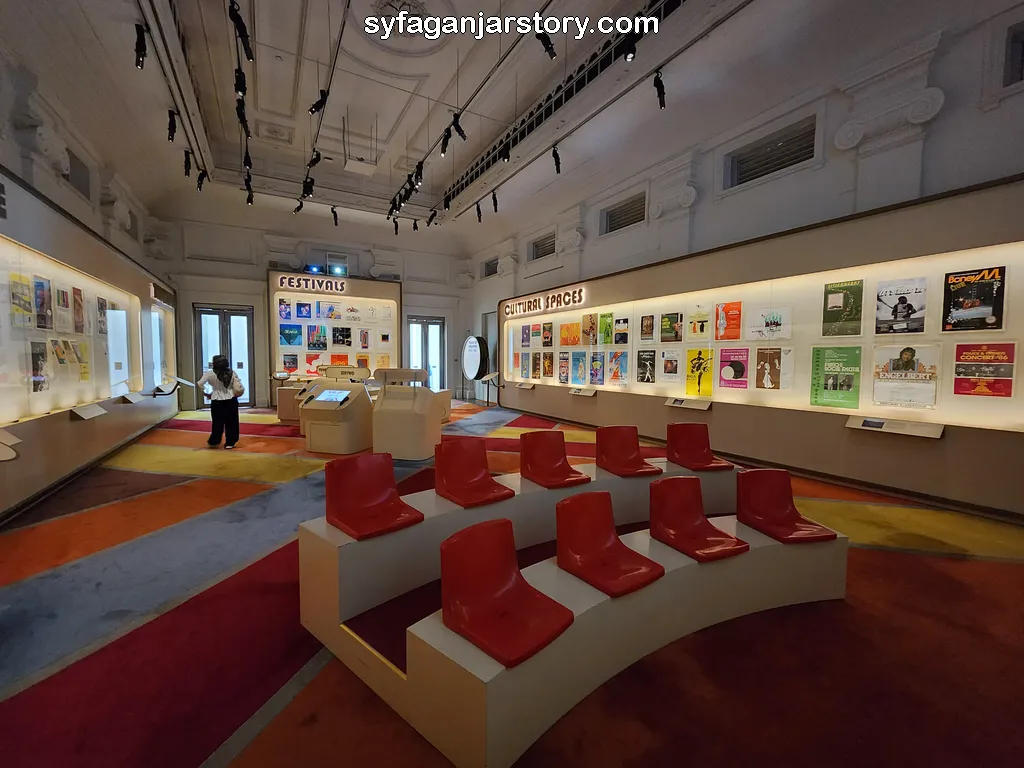
The last exhibition, "Voices of Singapore," focuses on the years 1975 to 1985, presenting modern Singaporean culture influenced by the nation's diverse population.
In this room, visitors can explore movie posters, music, and festival memorabilia from the period, as well as miniature movie theater seats from that time. Guests can also sit in these chairs while watching a video on the screen.
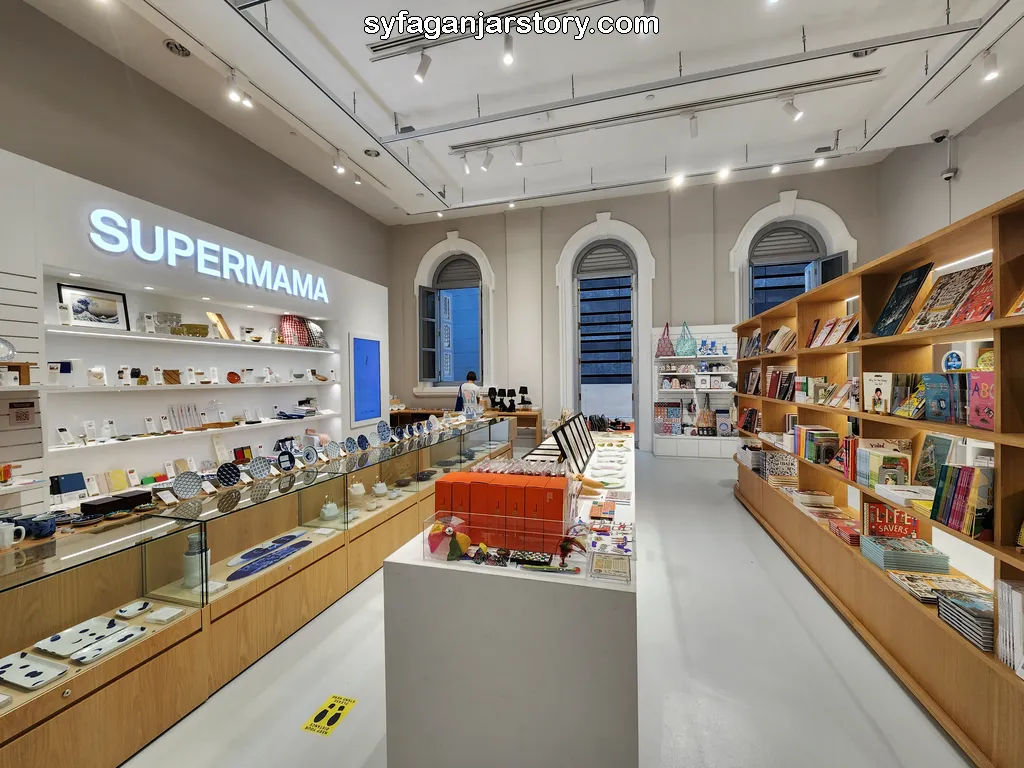
In addition to public amenities like restrooms, the National Museum of Singapore offers facilities such as restaurants and souvenir shops. Two dining options, Flutes and Food for Thought, are located on the first floor.
The souvenir store, Supermama, also on the first floor, sells a variety of items, including bags, plates, glasses, and jewelry crafted by local Singaporean artisans, as well as books for children and adults.
Overall, our visit to the National Museum of Singapore was a captivating and educational experience that provided us with a deeper understanding of Singapore's rich and diverse history.
The museum's well-curated exhibits and engaging multimedia presentations offer an immersive journey through the nation's past, making it a must-visit destination for anyone interested in learning more about Singapore's heritage.
In addition to the exhibits, the National Museum of Singapore also hosts various events, such as workshops, talks, and performances, that cater to a diverse audience. These events are designed to promote an appreciation for history, art, and culture among the public, as well as to encourage dialogue and learning.
If you plan to visit the museum, it is worth checking their event calendar to see if there are any programs of interest during your stay.
In conclusion, our visit to one of Singapore's most iconic museums was a truly enriching experience. With a ticket price of only IDR 100,000, we believe the museum offers great value and a comprehensive understanding of Singapore's history.
We plan to return in the future to explore the special exhibitions we didn't have time to visit on this trip. If you are a reader who has also been to this educational attraction, we'd love to hear your thoughts.
